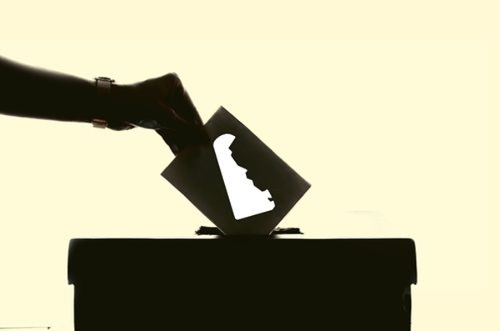
Center for Analysis of Delaware's Economy & Government Spending
March 23, 2023
"This is the first principle of democracy: that the essential things in men are the things they hold in common, not the things they hold separately."
- G.K. Chesterton
For decades, Delaware was a "bellwether" state that was governed from the "center" and, for decades, voted for the nationally-winning Presidential candidate irrespective of their Political Party affiliation. This began to change in the early 1990s, and the trends have accelerated. Delaware is now a highly partisan state, which carries with it a bunch of negative impacts.
Below is an analysis of Delaware's voter registration changes and election turnout over the last several decades.
Democrats: To Win Statewide, All You Need Is New Castle County
 |
(Chart Source: Delaware Department of Elections.)
In 1994, when Bill Clinton was President and Tom Carper was Governor of Delaware, Democrats began a decades-long romp in registering voters in New Castle County.
From 1980 until 1994, Republicans' average annual voter registration increase was 3.9%, and Democrats significantly trailed, growing by only 2.2% per year.
Then something changed.
Between 1994 and 2022, Democrats average annual voter registration growth tripled to 6.6%. But Republicans' average annual voter registration increases remained flat compared to the previous period, growing at 3.8% per year.
The power of compound interest matters.
In 1994, statewide Democrats outnumbered Republicans by about 24,000 voters - many of whom were Reagan Democrats. By 2022, Democrat voter registration advantage had leapt to over 152,000 with nary a Reagan Democrat among them. The Democrat registration machine was so successful that by 2008, there were more Democrats in New Castle County than Republicans statewide.
Republicans Flip Sussex County
While Delaware Democrats were on a march in New Castle County, and therefore, statewide (New Castle County is home to 56.5% of the electorate), Sussex County Republicans began out registering Sussex County Democrats. By 2016, Sussex County Republicans outnumbered Sussex County Democrats for the first time in State history, and this localized trend has continued. In Sussex County, Republicans outnumber Democrats 79,048 to 70,035.
Republicans Almost Losing to the "No Party" Political Party
Delaware is home to 17 different political parties, but with all due respect to the 15 parties not named Democrat or Republican, only the Libertarian Party has more than 1,000 voters. For instance, the news media often trumpets the importance of the "Working Families Party" (WFP), but the WFP has only 333 registered voters in Delaware - simply a rounding error.
In short, the impact of minor political parties on the electorate is meaningless.
But while there is no threat to the two major political parties that they will be replaced by another political party, more and more voters in Delaware are indeed choosing to register as "No Party." The loser in this shift seems to have been the Republican Party. There are now over 171,000 voters registered as "No Party" - just 20,856 voters short of the Republican Party total of 211,623. This ~20,000 voter gap has remained stable for the last five years.
|
Impact on Elections and Government Credibility
In January 2023, an NBC poll found that 71% of Americans feel that the Country is on the wrong track. Anecdotally, many Delaware voters are also very unhappy. As evidence, the 2022 General Election turnout was only 43.7% (Source: Delaware Department of Elections). Plus, as shown previously, almost 25% of the Delaware electorate have opted out of the Primary system by registering as "No Party."
Both parties claim to want to increase turnout, but both have failed (See Chart below - Source: Delaware Department of Elections). Turnout in the 1980s regularly beat 80%. Now, too many public officials are elected by only a handful of voters in "Primary Elections" and then easily cruise to "General Election" victory with no real opposition (only the 2020 "Pandemic" Primary Election defied this trend with a 32% Primary turnout - which was still only 1 of 3 voters). These elected officials tend to be very extreme and see no need to negotiate or find common ground.
|
Perhaps it is time for the General Assembly to review the "Primary Election" process and make changes to increase voter participation in those determinative elections. For years, I opposed "open Primaries," but as elections get more and more partisan and local turnout remains poor, it is time to re-evaluate the nature of primary elections in Delaware to provide real voter choice and, therefore, participation.
If elections continue to be won by extremists elected in primaries by only a handful of voters, distrust in government will continue to grow among the general population.

